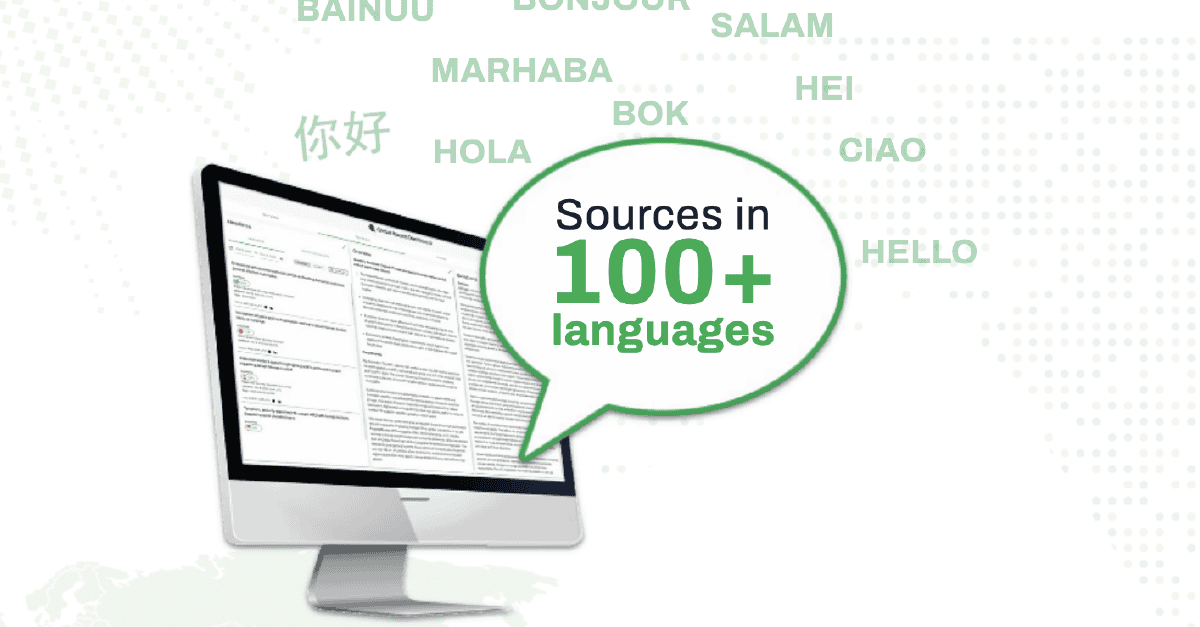When it comes to the threat vulnerability and risk industry, there’s no such thing as being over-prepared. After all, the geopolitical landscape is in constant flux. And with seemingly bad actors around every corner, what might seem like a peaceful and stable environment at noon on Monday could become a high-risk environment by noon on Thursday.
That’s why there are teams who spend their days dedicated to risk and threat intelligence and monitoring. To help these professionals do their jobs — during a time when it seems as if disruptions are happening at an increasingly frequent pace — most use technology-driven tools that make it possible to not just prepare for the disruption, but ideally circumvent danger and saves lives.
In many cases, the bulk of the tools being used focus heavily on monitoring the 24/7 news cycle, social media, and widely used chat rooms. The information gathered from these sources is then used to provide alerts regarding disruptive events in real-time. But what really helps organizations keep their people and assets safe isn’t just receiving these real-time alerts. The true power comes from learning about a problem before it happens. And not only just hours before it happens, but days before, offering an immense amount of time to make critical, potentially life-saving adjustments.
Let’s take this real-world example.
On December 31, 2021, Seerist’s PulseAI score for Kazakhstan started to drop from a high. This shift was in response to increased chatter regarding the government’s decision to end fuel price caps. The organizations using Seerist saw this drop in stability as a significant leading indicator that there could be major impacts to their people and operations related to threat vulnerability and risk. And there was. On January 2nd, protests began. However those using Seerist were able to prepare, as the notification of dropping stability from PulseAI corresponded with a human-derived alert verifying the size, scale, and impact of the protests.
On January 4th, despite the fact that the government pledged to bring back fuel price caps, PulseAI alerted users to continued unrest, dropping another 8 points from its average range in the region. On top of that, four Hotspots – machine learning-driven indicators of abnormal activity – were triggered in multiple parts of the country.
Thanks to this data, an organization using the Seerist platform was able to stay ahead of the crisis and help its people get out of Kazakhstan 4 days before the deadly protests, which occurred on January 4, 2022. A declaration of a State of Emergency wasn’t even called until January 5th. Had the organizations not had these 96 hours to make the right preparations and arrangements, thousands of people could have been trapped, injured, or even killed.
This is just one example of how technology is propelling the risk and threat industry beyond reactive mode to proactive, strategic planning, focusing on threat vulnerability and risk. The most advanced risk and security solutions combine innovative technology with human analysis. This fusion of data + expert insight alerts organizations to shifts in geopolitical landscapes as they unfold and, importantly, before they manifest. In the realm of threat vulnerability and risk, four days can spare thousands of lives.
Navigating Threat Vulnerability and Risk with Seerist
Seerist’s augmented analytics solution combines AI, machine learning, and expert human analysis to deliver trustworthy threat intelligence. By automating the collection of global data, capturing various shifts and swings, and filtering out the noise, Seerist provides valuable insights. These insights are seamlessly integrated into a user-friendly dashboard, ensuring swift and dependable decision-making in crucial moments.
Book a demo to see Seerist’s threat intelligence tools in action or follow us on LinkedIn to learn more about how Seerist helps you stay ahead of the curve.





